Soil
Soil is the medium that plants grow in, and it consists of air, moisture, minerals, and organic matter. It also includes the microorganisms that break down organic matter to further enrich the soil. There are many varieties of soil but they are all derived from some combination of sand, silt, and clay; the relative percentages of these minerals determine the soil texture. The soil texture diagram will show you some standard combinations.
While we classify soil according to its mineral content, plants need more than sand, silt, and clay to thrive. They need air, water, and nutrients. A good soil will have and hold all of these things, based on its texture and structure.
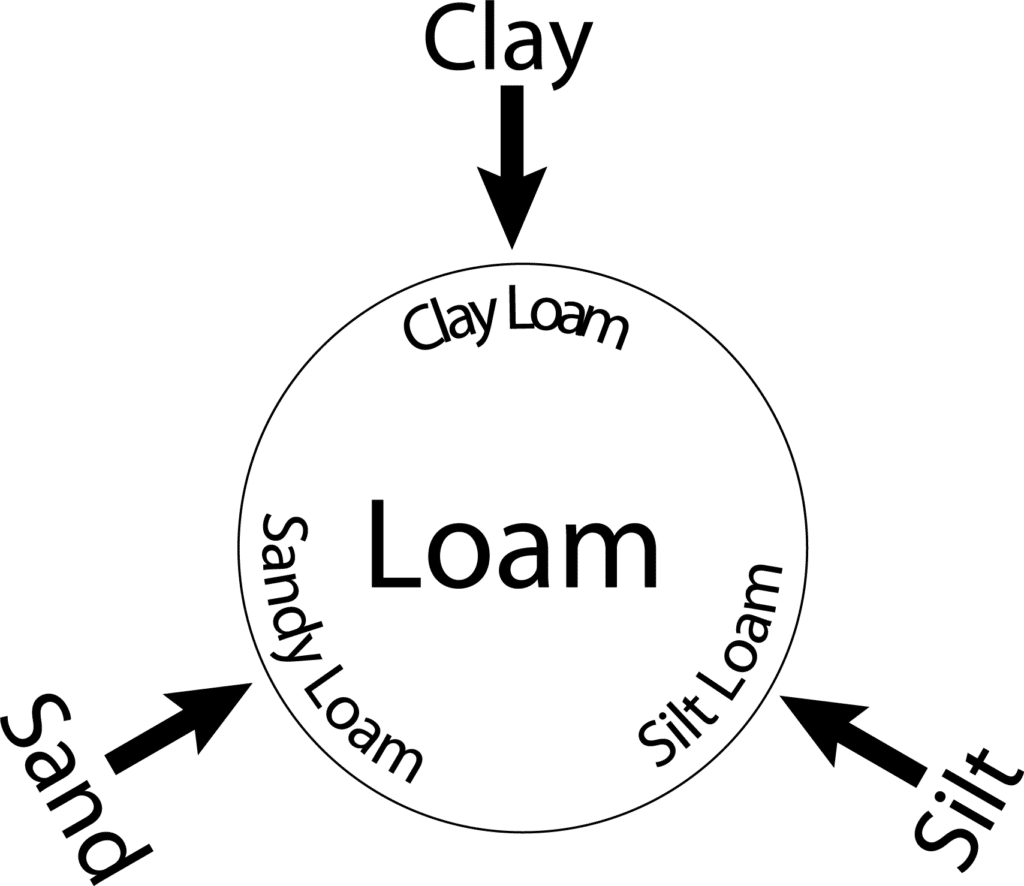
Soil Texture
Texture refers to the size and distribution of the soil particles and is most influenced by the mineral content. The texture can tell you a lot about a soil: fine textures, common with clay soils, get compacted easily, and compacted soils don’t let much air and water in. Coarse textures, common with sandy soils, let plenty of air and water in but don’t hold them well.

Soil Structure
Structure refers to the way soil particles are put together. For practical reasons, think of structure as the shape of the soil particles. The soil minerals bind with the organic matter to form aggregates of various shapes. Some shapes are ideal for holding air and moisture in the soil. Other shapes don’t allow enough moisture and air, some allow too much, and some simply don’t hold them there long enough to help the plant roots.
The ideal garden soil is the one that best suits the needs of your plants. Although some plants prefer more extreme soil conditions, the best soil for most plants will be one that has a loamy texture, good granular structure, and plenty of organic matter.
Successful gardens depend on good soil, so the next step is to perform a few easy tests on your soil to determine what type of soil you have. While not everyone will have the “ideal” garden soil you can modify your soil by adding amendments, which are simply things you add to your soil which improve its physical characteristics.
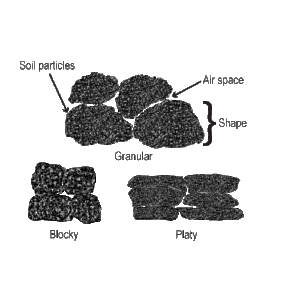
Texture Test (hand method)
Note: This test will give you a rough approximation of your soil texture. Some soil textures are hard to determine based on feel, however.
This test will let you get your hands dirty. Moisten some garden soil, grab a small handful, and squeeze it like a sponge. Knead the soil in your hands and try to roll it between your hands. Then rub some wet soil between your thumb and fingers to judge its grit.
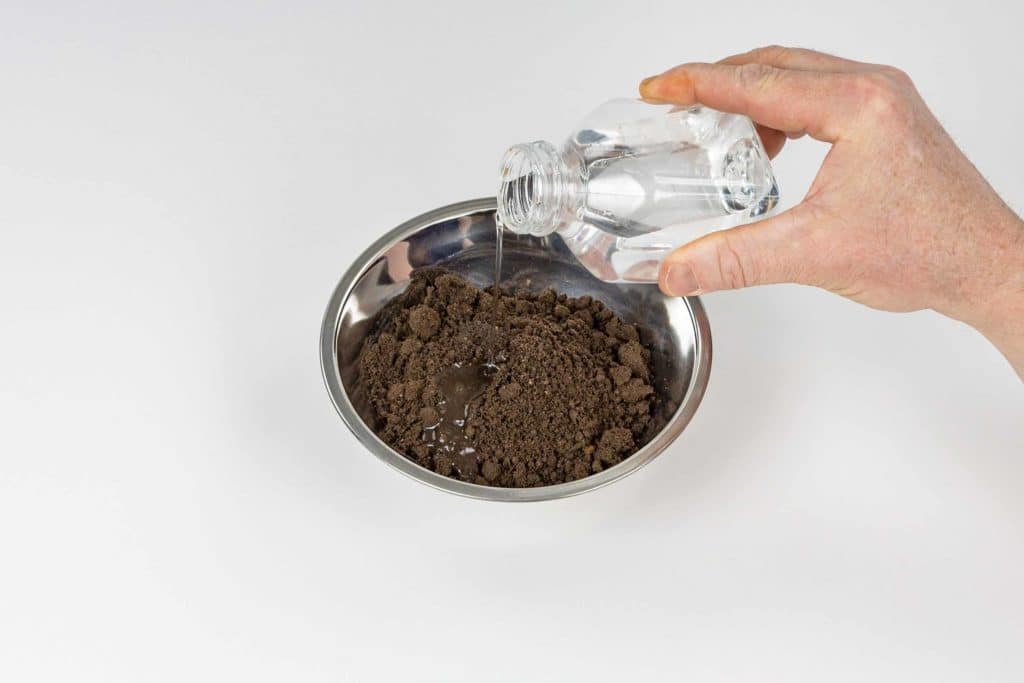
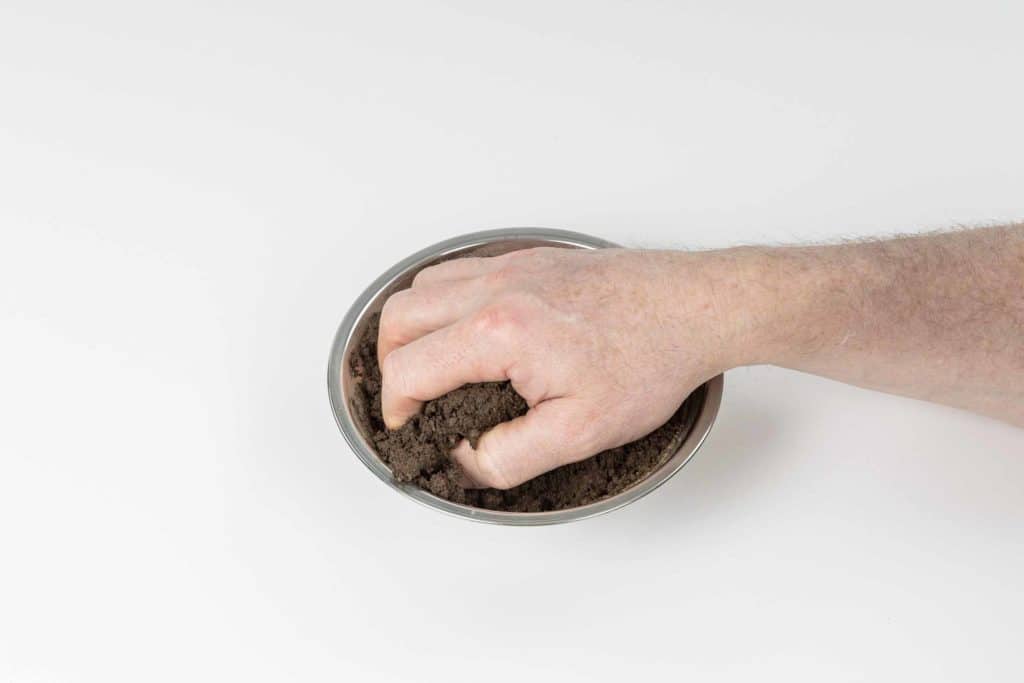
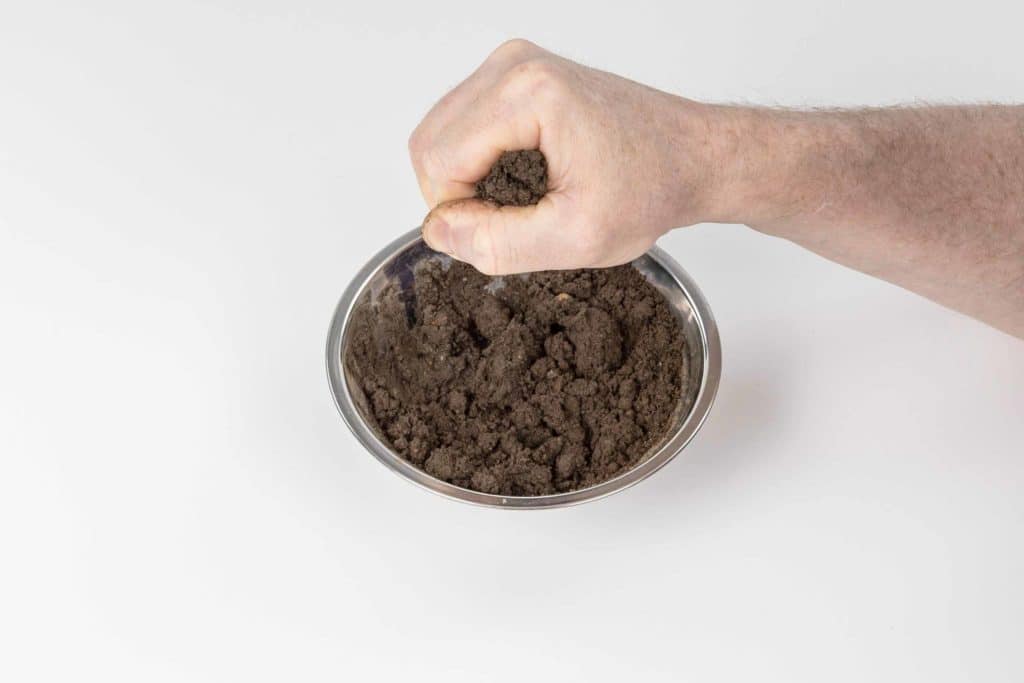
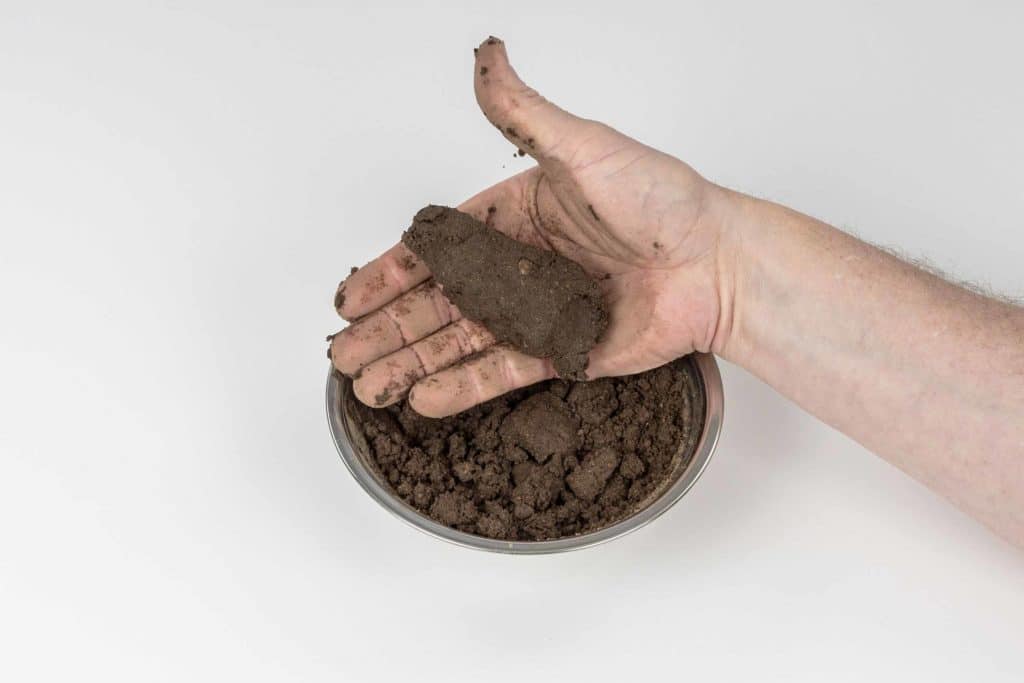
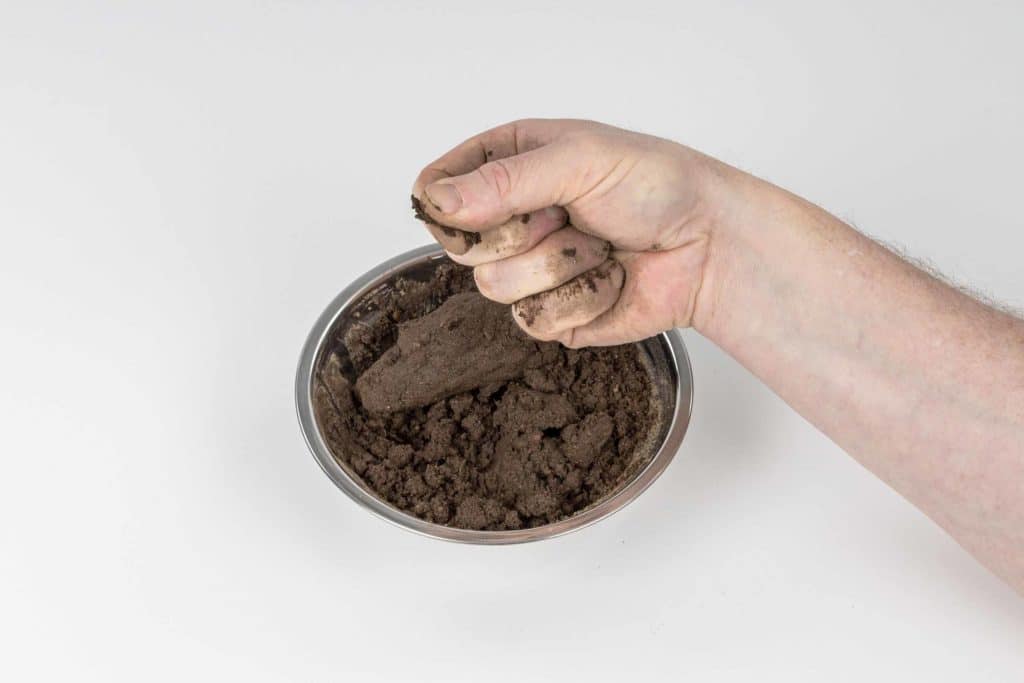
Most soils will fit one of the following descriptions:
Clay soils feel slippery or slick when rubbed between your fingers. The sticky handful will not crumble, and it can be rolled into various shapes easily.
Clay loam soils feel much like clay soils only not quite as sticky. The handful will roll into various shapes easily, but will fall apart more readily than straight clay soil.
Silty soils have the texture of the muck found on the bottom of ponds and rivers—at first it feels pretty smooth, but when rubbed between your fingers it has a fine gritty feel. The handful will stay together when squeezed, but crumbles without delicate handling.
Sandy loam soils feel gritty, but the handful can be worked into a clump that will stay together if handled very delicately.
Sandy soils feel very gritty, and you can see the individual sand particles. The handful crumbles quickly.
Since most soils are a mix of these three minerals, the texture test may not be conclusive. The simple jar test can reinforce your texture test results.
Note: This test should be used in conjunction with the texture test. Neither test is conclusive, but the two together can be helpful
Texture Test (Jar Test)
- Using a garden trowel or spade, dig a small hole (about 6 inches deep) in your site. Slice a sample from the edge of the hole as if you were cutting a thin slice of cake: cut a sliver from top to bottom, using your hand to hold the slice in your trowel or spade. Remove any stones, grass, etc., and put this slice in the enclosed jar. Fill the jar to the soil fill line.
- Add a teaspoon of low-sudsing detergent to the jar, and fill the jar with water. Cap the jar and shake the mixture vigorously for 30 seconds. Set the jar down on a level surface.
- Leave the jar to settle for a day or two undisturbed.
- Unless your soil is straight sand, silt, or clay, you should notice at least two distinguishable layers of soil after the mixture has settled. There may be a third pronounced layer, although usually the middle layer blends into the top and bottom layers.
- The bottom layer will usually be sand. It will be lighter colored than the other layers, and the individual particles should be visible.
- The middle layer will be silt. It tends to blend smoothly into the top and bottom layers, but should be dark-colored with extremely fine particles.
- The top layer should be clay. It will appear as a smooth band, with few (if any) visible particles.
If you have trouble discerning the various layers, you may find it helps to view the jar in good light from a distance of 3 to 5 feet. In addition, we have put an extra “targeting ruler” on the back of the jar that is in 1⁄4 inch increments and will help you see a difference between the layers to zero in on a specific area of transition.
- Using the ruler on the Garden Tutor Soil Testing Jar measure the thickness of each layer and the entire sample by counting the increments on the ruler. Divide the thickness of each layer by the thickness of the entire sample. Multiply each result by 100, and you will have the rough percentages of sand, silt, and clay that comprise your soil. Match your results to the chart to find out your soil texture type. For example: if your sand layer is 1 inch thick and the entire sample is 3 inches thick, divide 1 by 3 to get .33, then multiply this by 100 to get 33%. So your soil has 33% sand in it. In the “Toolbox” section of our website “Soil Texture Testing and Identification” We now have an automated soil texture calculator that is fully integrated with our testing jar!
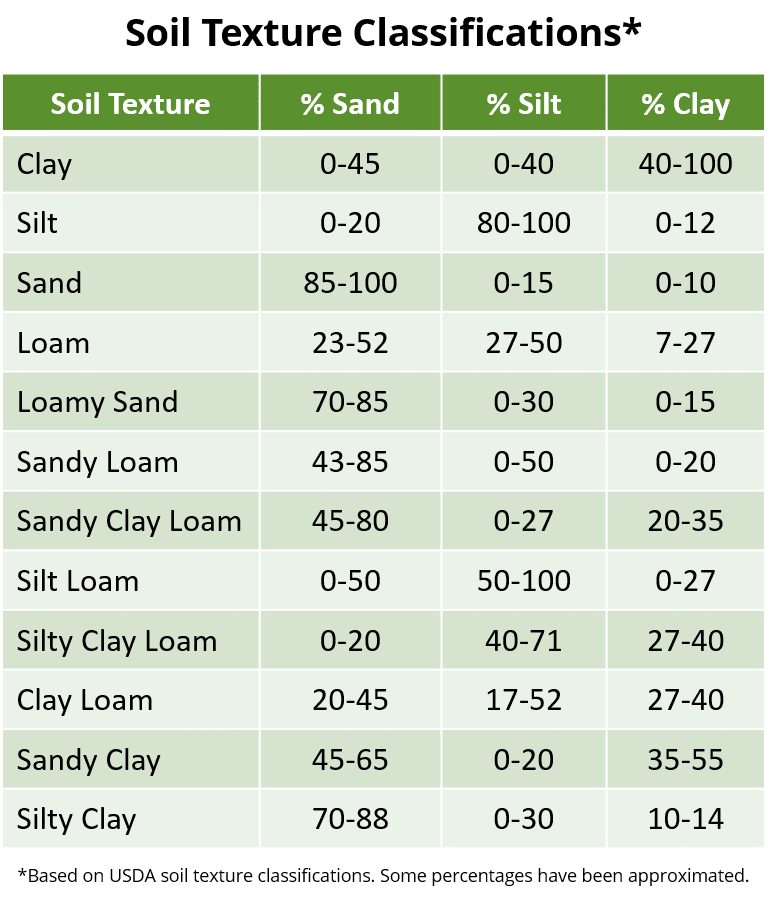
Note: One common misconception is that if a soil is compacted it must be clay. This is not always the case. Any soil can be compacted, clay simply compacts much easier than other soil types.
Amending Soil
Once you have identified your soil texture, if your soil composition is out of proportion for loam, you can compensate for this by adding various soil amendments to help improve soil structure. There are two things to remember, though: (1) you will need to add a lot of whatever you add to make a noticeable change in soil composition, and (2) improving your soil structure takes time. The process is very gradual, although the speed at which soil structure changes can be affected by the type of amendment(s) you use.
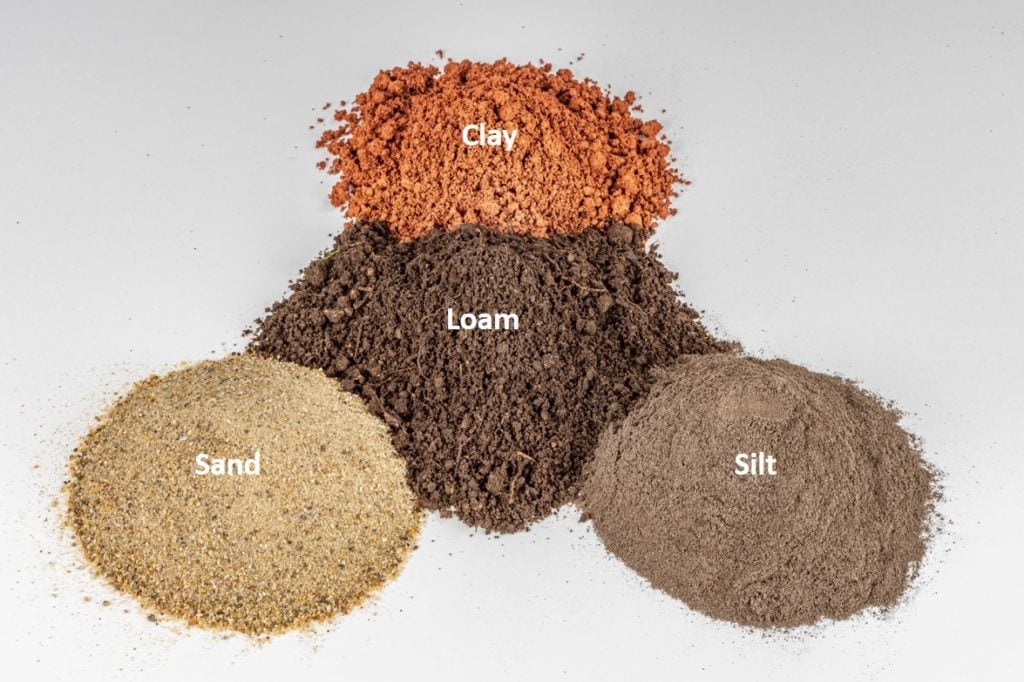
Note: While it is possible to change soil texture by adding sand, vermiculite, or clay, the material and energy involved is considerable. Further, if you do not add enough of these substances to your soil there will be no positive effect on soil texture. In fact, adding too little sand to clay soil can actually make matter worse.
The amendment of choice is good compost, aged manure, or an improved top soil. Because these are rich in organic content and very broken down already, they will bind with your existing soil faster than other amendments and they will sustain your plants until the soil structure has been changed. You can use raw organic matter like leaves, bark, or peat moss, but it will take longer to affect the soil structure; the raw amendments must finish composting in the soil before they bind. Still, since raw organic matter takes longer to break down its effects often last longer. Whichever type you use, keep in mind that plants will benefit from annual additions of organic matter.
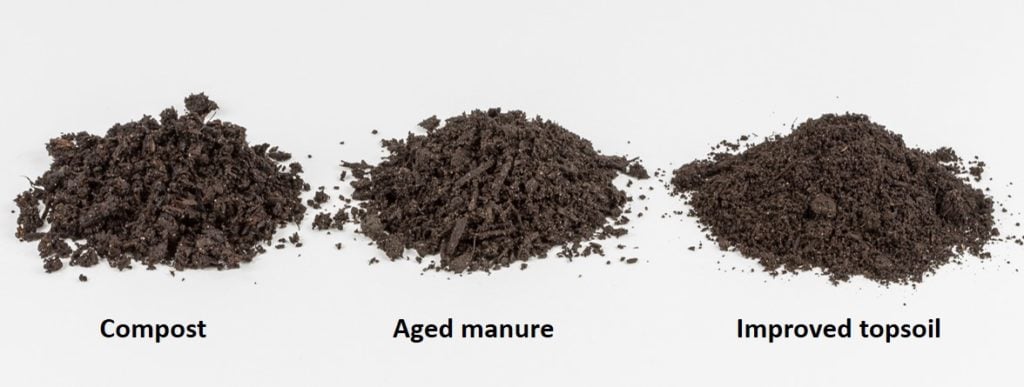
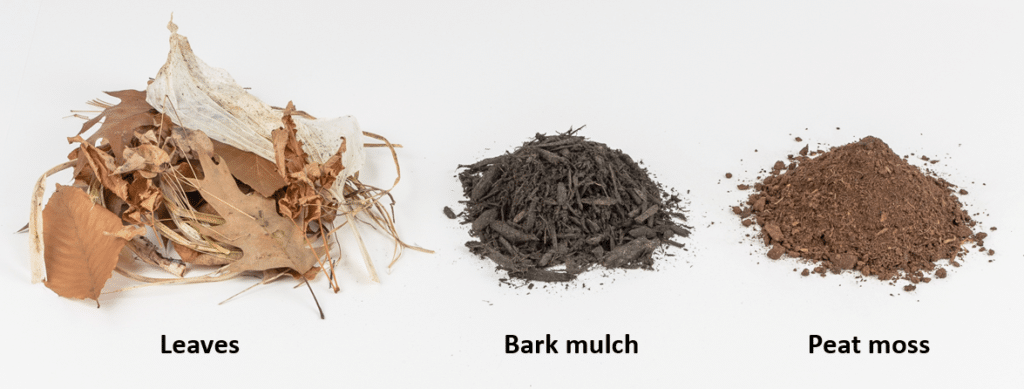
If your jar test reveals that you have a straight clay, silt, or sand soil you can add up to 50% by volume of an amendment to the soil. If your soil falls into one of the other categories (as most soils will) then add up to 25% by volume of an amendment to achieve a good mix. When you are amending a bare site, work the amendments fully into the soil by tilling or otherwise turning the soil (Module 5: Prepare provides complete details on preparing your site). If the site already has established plants, put the amendment on top of the soil and gently rake it into the surface.
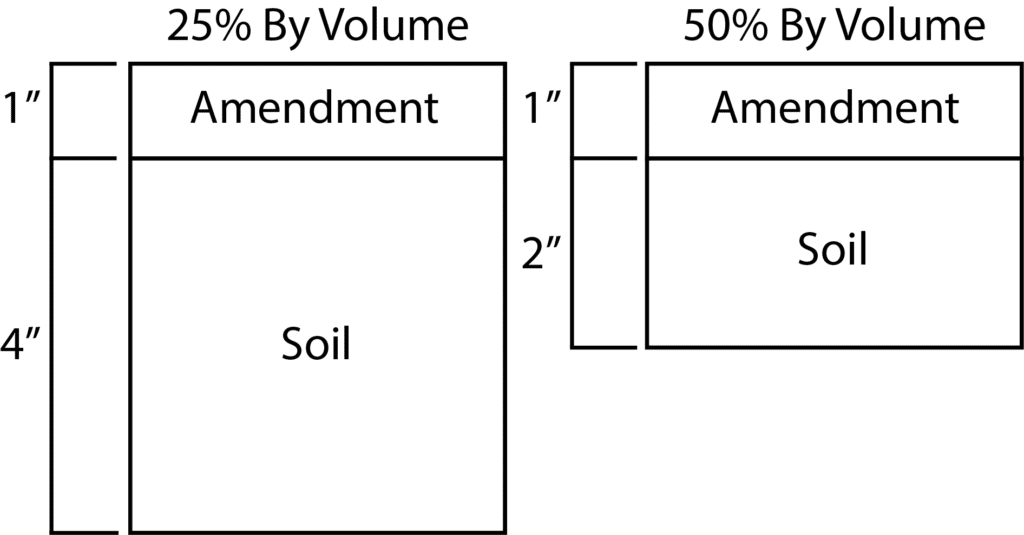
A precise soil blend is not needed, by the way. Just try to get it close. As we’ll remind you often in this course, most plants are remarkably flexible with respect to soil texture and other variables. There are soils they definitely thrive in, but they’ll at least grow in most soils.
Soil Horizons
For gardening purposes, we are usually concerned with the top 6-10 inches of soil because most plants (from a Rose to a Redwood) will have their feeding roots close to the surface where most of the moisture and nutrients are. Below the 6-10 inch layer of fertile soil are other layers called horizons. Soil horizons are bands of differing soils that change with depth. These changes can be in color (darker shades indicating more organic material), hardness, and type. Soil horizons tend to be more fertile at the surface and less fertile the deeper they go.
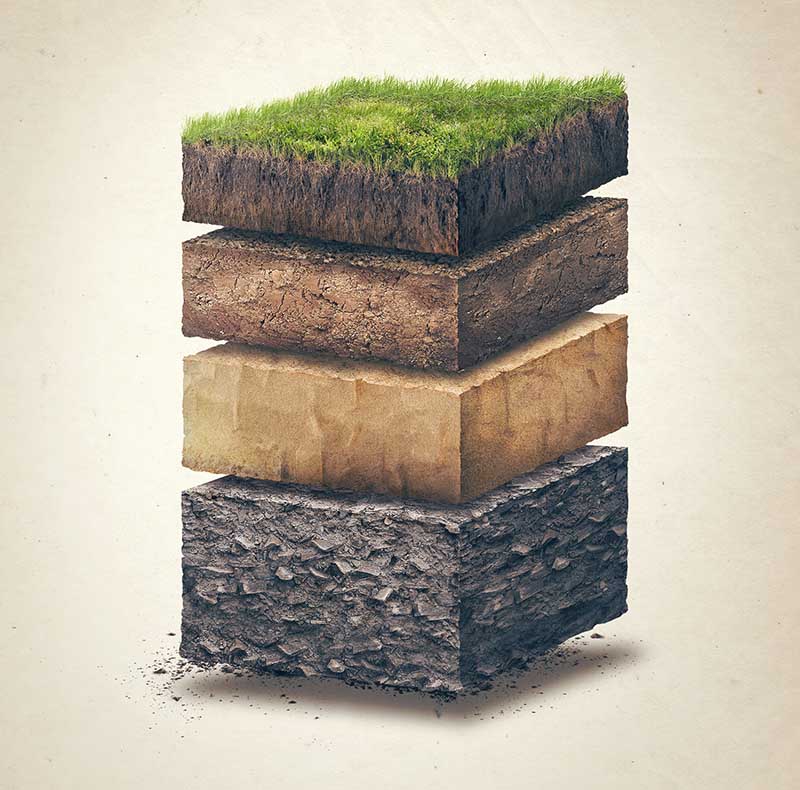
Generally, soil horizons are a concern only if you have a drainage problem or very limited topsoil. This is common around newly-constructed homes where soil has been compacted by construction equipment and a thin layer of loam was spread over it after construction. If your soil stays wet or you have standing puddles for a few days after a good rainfall, you can either modify your horizon to improve drainage (In Module 5: Prepare you will learn about drainage solutions) or find plants that can deal with this condition.
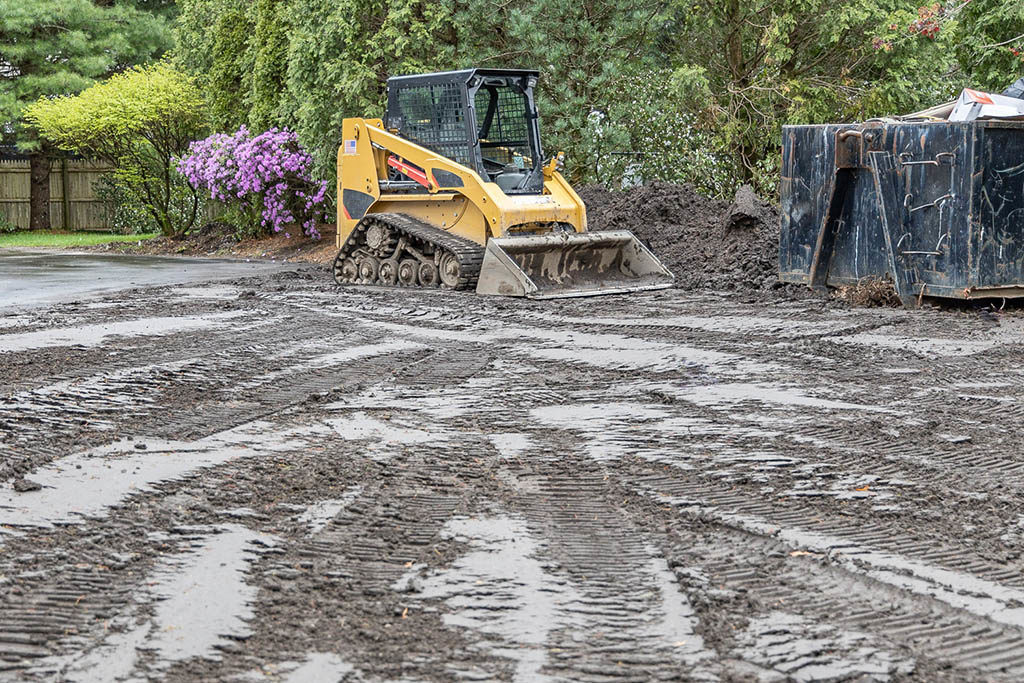
Disturbed soils occur when infertile soil horizons are mixed in with more fertile topsoil. Backhoes and bulldozers are prime soil disturbers. If you have disturbed soil you may need to adjust and amend it to sustain healthy plants.
Special Soil Conditions
Clay Soil
If you live in the Southeast you probably know about clay soil.
It is extremely difficult to work when wet and it is harder to work when it is dry. Try to work with it when it is moist. If you want a more workable, balanced soil, add a lot (50% by volume) of aged compost or manure. If the soil is acidic, you’ll probably want to add lime as well. Eventually, the adjusting and amending will give you a soil with much better structure.
Even so, drainage and surface runoff may be a problem, because the soil horizons will be tightly packed. Refer to Module 5: Prepare to learn more about specific drainage solutions. These solutions can involve using corrugated pipe drains (in thick clay, chimneys are not very effective) or swales to divert runoff. Consult with a professional if you aren’t sure what to do.
Desert Soils
Arid climates have unique soil problems. For starters, they are often very alkaline. They can also have a hardpan called caliche you will have to break up. Changing soil structure by adding amendments is difficult because alkali soils rapidly dissolve organic matter. Watering often leads to the accumulation of salts in the soil (they percolate to the surface) unless there is good drainage. Raised beds or container planting is recommended, although one of the best remedies is to plant things that are well suited for these conditions.
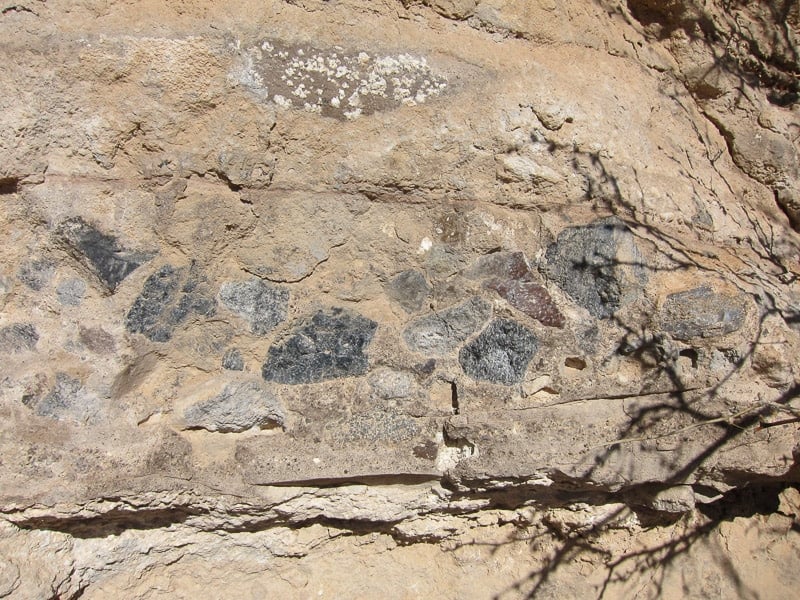
This simple practice involves a type of gardening called xeriscaping.
Basically, it involves:
- Using plants suited to your environment.
- Using mulches to retain moisture.
- Using efficient watering techniques and devices.
- Maintaining the proper soil conditions for your plants.
One approach that can help when dealing with unique soils is to use native plants when gardening. Whenever practical you should use native plants; they are adapted to their regions, making them suited to the adverse conditions in your area. You may find also that they require less maintenance than other plants and attract native wildlife as well. Keep in mind that native plant species are unusually well-adapted to a specific environment in your area (such as a woodland setting or swamp). So, if you decide to use them, learn about the plants and their specific growing conditions first.
Soil – pH
Note: This test should be performed separately from the jar test. The detergent used in the jar test can affect your pH reading so make sure you rinse out your Garden Tutor testing jar before testing soil pH.
pH stands for potential hydrogen, and it can tell you a lot about your soil. For your purposes think of it as potential nutrients—pH determines which nutrients are available to plants. In fact, pH affects the microorganism activity in your soil. Soil pH determines its acidity (sourness) or alkalinity (sweetness). The lower the pH, the more acidic your soil is; the higher the pH the more alkaline it is. A pH of 7 is neutral (neither acidic or alkaline). For gardening, most plants prefer a soil pH between 6 and 7 with 6.5 being your target soil pH. Some plants prefer more acidic (below a pH of 6) or alkaline soils (above a pH of 8), but for general gardening all that matters is that your soil not be too acidic or alkaline unless the plants you select can tolerate these conditions. Plants are very flexible with respect to pH, so long as your site isn’t near the extremes of acidity or alkalinity for the particular plants.
If your soil pH is too extreme for your plants, it creates an unhealthy environment by limiting the nourishment that is available to the plants and by weakening their natural defenses against pestilence and disease.
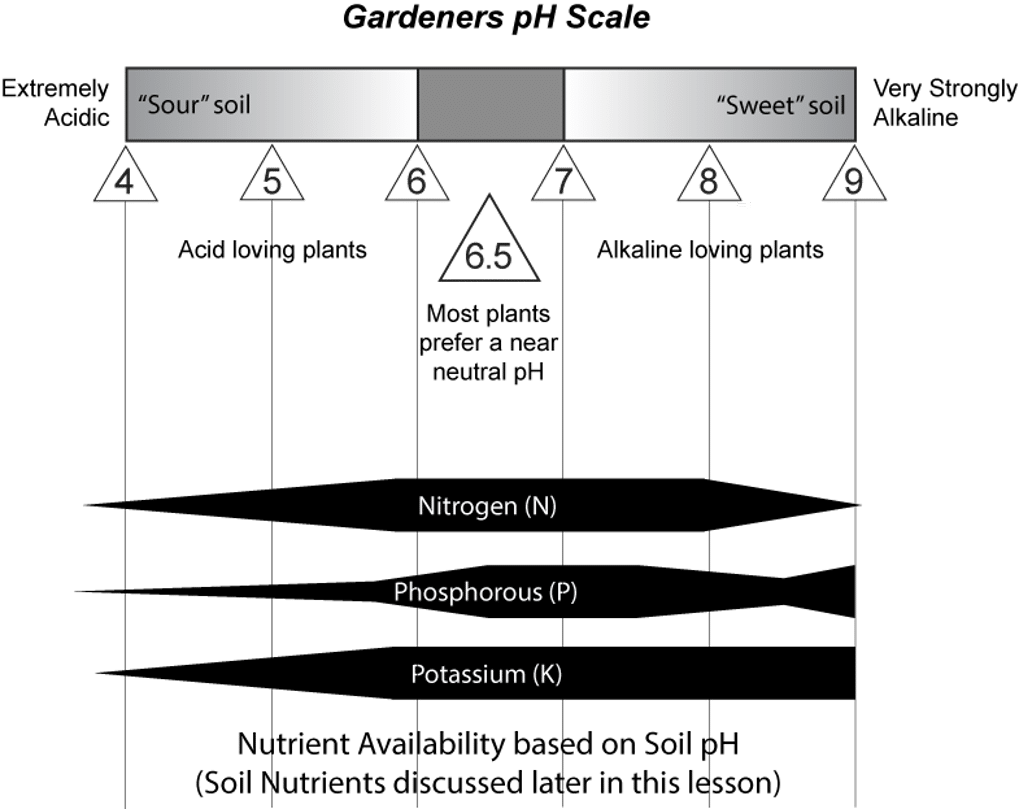
pH Test
The pH test is a simple indicator test requiring some soil, water, the Garden Tutor Soil Testing Jar, and a Garden Tutor pH test strip. The Garden Tutor pH test strips cover a pH range of 3.5 to 9.0 in .5 increments. Each pH test strip has four pads that change color depending on the pH of the test material. Each pad on the pH test strip covers a specific segment of the pH range. Having four pads helps with accuracy since a pH range of 3.5-9 is broad and the color changes can be subtle and difficult to determine.
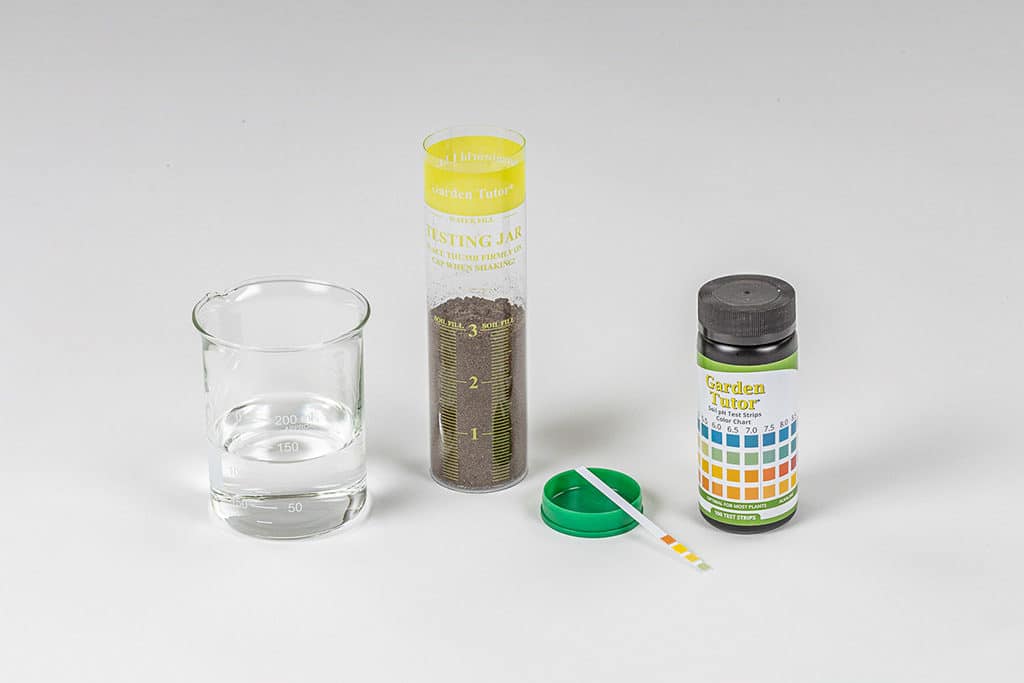
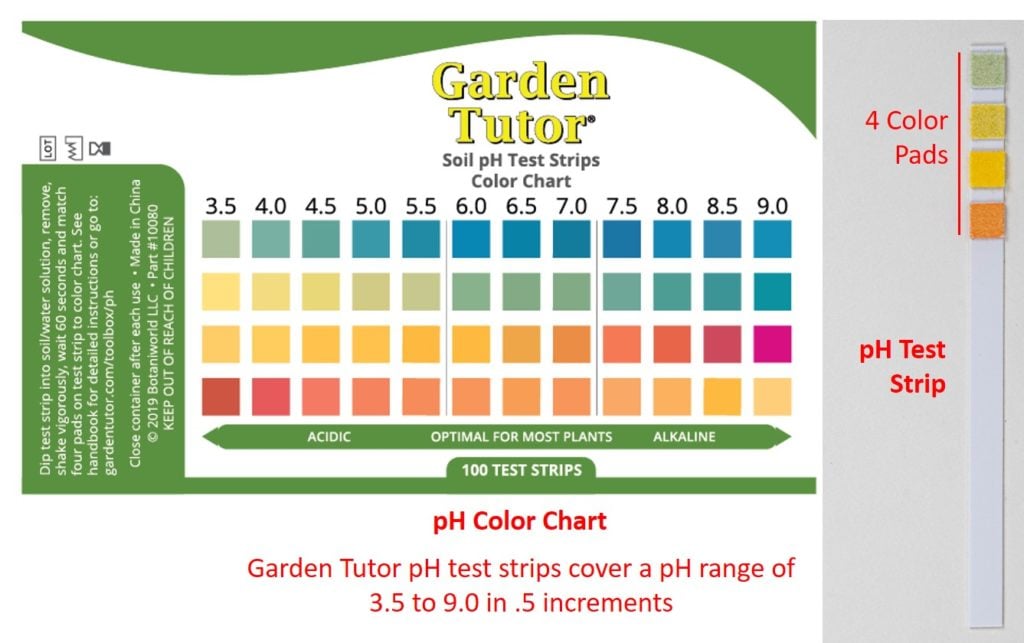
The pH strips have been specifically designed and calibrated for soil testing and cover a pH range that encompasses nearly all garden soils. If you follow the subsequent steps you should be able to determine your soil pH within a .5 increment. If you need pinpoint accuracy, consider sending a soil sample to a professional soil testing laboratory. You can go to the “Toolbox” area of the Garden Tutor site under “Soil Testing” to learn about current options for laboratory soil testing.
- You will need a representative sample of your garden soil. Using a garden trowel or spade, dig a small hole (about 6 inches deep) in your site. Slice a sample from the edge of the hole as if you were cutting a thin slice of cake: cut a sliver from top to bottom, using your hand to hold the slice in your trowel or spade. Remove any stones, grass, etc., and put this sample in a bucket or large container. Repeat this process a few times around your garden site. Mix the soil samples thoroughly in the bucket or container and eliminate any foreign debris.
- Using a tablespoon put 8 level tablespoons (4 ounces) of the mixed soil into a clean plastic cup or your Garden Tutor Soil Testing Jar and thoroughly mix with 8 level tablespoons (4 ounces) of water for 30 seconds.
- Wait 10 seconds for the soil to settle a bit, and then dip one pH test strip into the solution. Hold the strip in the solution for 3 seconds.
- Remove the pH test strip and shake it vigorously to remove any dirt on the pads and wait one minute for the soil solution to fully react with the pH test strip. If the pads are still obscured by the dirt after you waited the full minute you can quickly dip the pH strip into a cup of distilled water to rinse off excess dirt. Depending on soil pH some or all the color pads will change color. Match the resulting color(s) with the color chart that accompanied the pH test strips to determine your soil pH. This takes a bit of work and it helps to do this in a well-lit room or by a sunny window to accurately assess the color change against the color chart. Keep in mind, after 5 minutes the pads on the pH test strip will dry out and the colors will fade so the pH test strips will no longer be useful and should be discarded.
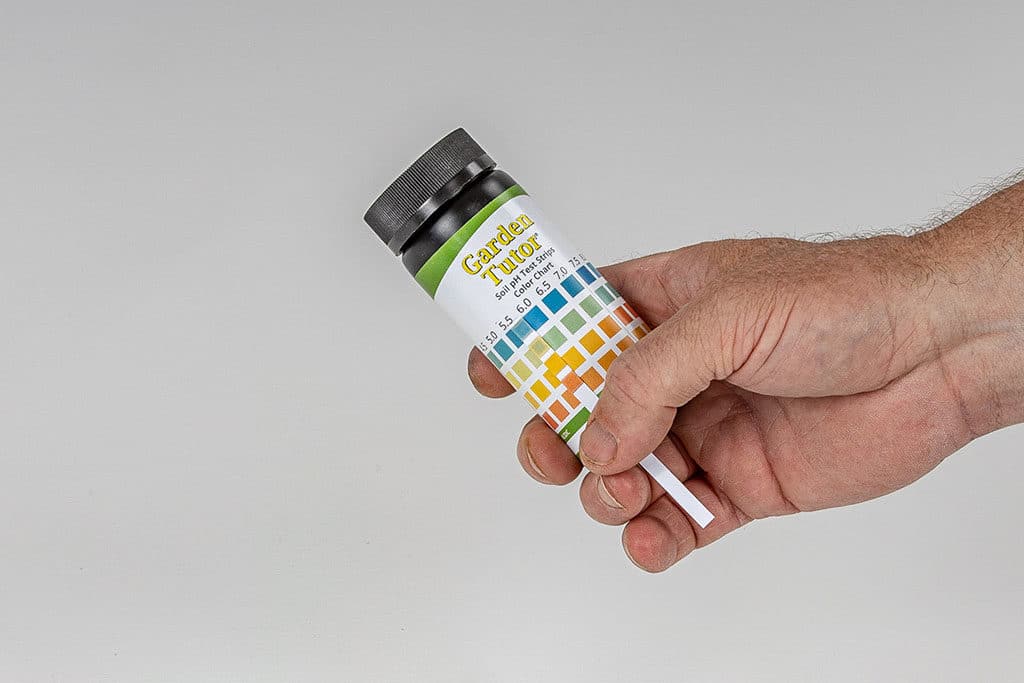
Note:
If you find that dirt is still making it difficult to see the color pads on the pH test strip you can use a disposable coffee filter to filter your soil/water mixture. Simply place the coffee filter over a small cup and slowly pour your soil/water mixture into the coffee filter. Once enough filtered water has accumulated in the bottom of the cup you can remove the coffee filter and repeat the pH test in this filtered water.
For more consistent results, you can purchase distilled water for the test (it is best to purchase the distilled water just prior to testing as it will have a near neutral pH when unopened). We have included enough indicator strips for 100 tests, so you may want to test various parts of your site individually to see if there are variations within your garden. Spring and fall tests are useful, too.
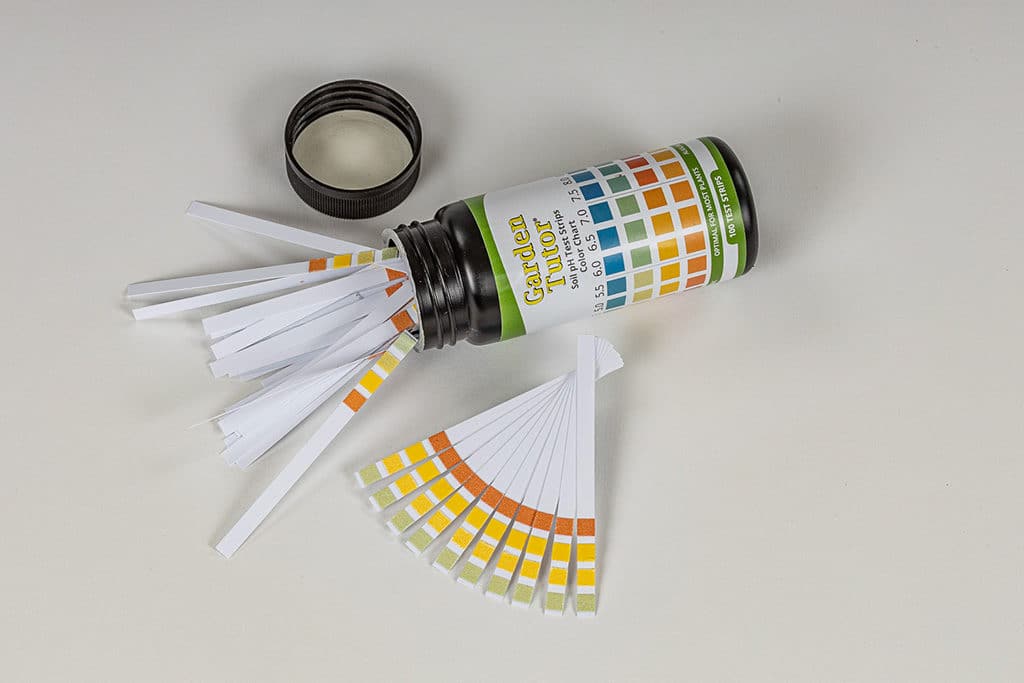
Adjusting Soil pH
Before you can adjust your soil pH you should know your soil type (Sand, Silt, Clay or Loam). Your soil type can affect the quantity of pH amendment (lime or sulfur) you use. You should also be aware that it takes a lot of amendments to change pH.
If you need a more acidic soil you can use sulfur or naturally acidic organic materials (peat moss, leaves or needles from acidic plants). If you use organic material the pH change will be very gradual; if you are in a hurry you may opt for sulfur. It is best not to use commercial plant acidifiers containing aluminum sulfates or fertilizers containing ammonia to alter soil pH; they are best used only to maintain plants already growing in acidic soil, and misuse can ruin your soil.
The best way to raise soil pH is to add lime. Lime is readily available and easy to apply. You may have a few types of lime to choose from depending what retailers in your area carry. Pulverized or pelletized limestone is usually a good choice (pelletized lime can be used in a broadcast spreader). Dolomitic limestone is limestone which contains magnesium and a few other trace nutrients. You can use ground limestone, just be aware that it is a powder, and powders are harder to apply with a broadcast spreader. Hydrated limes are also available; they work quickly but can burn plants and flesh if used incorrectly. In any case, be sure to follow the application rates and package instructions strictly. If you add too much at one time you can harm your plants and your soil.
The following charts will give you approximate application rates for lime or sulfur (at rates of pounds per 100 square feet and pounds per 1000 square feet). Just note if the chart disagrees with the label on the product you buy, always go with the manufacturer guidelines. In addition we now offer a handy soil pH adjustment calculator to further automate this process. Adjusting soil pH with lime and sulfur is not permanent so you’ll need to recheck soil pH every year or two and make adjustments as necessary. The degree and duration of the change depends on how finely ground the amendments are (lime and sulfur). The more finely ground (e.g. pulverized) the faster they alter pH but shorter their effects last (generally 1-2 years depending on your climate). Note that pelletized lime is finely ground but aggregated with a binding agent to form easy to spread pellets. It is best to apply lime and sulfur in the fall or early spring, so they can start working on your soil before you plant.
Nutrients
Nutrients are essential for plant growth. Of the sixteen nutrients needed for healthy plant growth, three merit special attention. A few others called intermediate nutrients (calcium, magnesium, and sulfur) are needed only if your soil is known to lack them; they are usually supplied when you adjust your soil pH. The rest are trace nutrients (micronutrients) that are present in most soils.
The common nutrients Nitrogen (N), Phosphorus (P), and Potassium (K) are the prevailing ingredients in most fertilizers, and can be purchased in dry or liquid form. Note that dry fertilizers require fewer applications and last longer than liquid fertilizers, although liquid fertilizers produce faster results. There are many fertilizers on the market, and it is very important to understand the labeling. There should be three large numbers on the label (example: 5-10-5) corresponding to the percentages of nitrogen, phosphorous, and potassium.
 In most cases, you will want what is called a balanced fertilizer, which has roughly equal proportions of N, P, and K. An exception to this general rule: if a laboratory soil analysis shows your soil overwhelmingly deficient in a particular nutrient, you may want to use either a straight fertilizer (with only the lacking nutrient) or a complete fertilizer that is unbalanced in favor of the deficient nutrient. Also, some plants have specific fertilizer requirements. Potatoes, for instance, will produce small tubers if they get too much nitrogen.
In most cases, you will want what is called a balanced fertilizer, which has roughly equal proportions of N, P, and K. An exception to this general rule: if a laboratory soil analysis shows your soil overwhelmingly deficient in a particular nutrient, you may want to use either a straight fertilizer (with only the lacking nutrient) or a complete fertilizer that is unbalanced in favor of the deficient nutrient. Also, some plants have specific fertilizer requirements. Potatoes, for instance, will produce small tubers if they get too much nitrogen.
A final note on fertilizers: they come in organic and in-organic types. Organic fertilizers usually consist of decomposed organic matter (compost, manure, fish scrap, seaweed) that finishes breaking down after you apply it, while inorganic fertilizers are usually chemically-refined organic matter. Organics often have much lower concentrations of N, P, and K than inorganics. Both give plants the nutrients they need but inorganics are more readily available to plants, especially during climactic extremes when the microorganisms that break down organic fertilizers in your soil are dormant.
Over the long run, you should use either organic fertilizers or a combination of organic and inorganic fertilizers to help maintain proper nutrient balance and continually improve the quality of your soil. Organic fertilizers are much harder to overuse (because they are less concentrated) and they either contain or promote beneficial organisms that help build your soil and fight harmful pests and diseases. Complete reliance on inorganic fertilizer leads to just that: complete reliance. If you don’t replenish the soil’s organic content, you will have to fertilize often. In general, organics improve your environment by keeping the soil fertile.
Soil Testing
The tests we have discussed are very useful for determining your site conditions. Still, you may want to consider having a laboratory soil analysis performed before you plant and then every few years after that. A laboratory test can give you more detail about the nutritional state of your garden, but more importantly it can alert you to soil contamination. If you plan to grow plants for consumption, or live in an area with old houses that may have leaded paint on them, we strongly recommend a laboratory soil test.
To have your soil tested:
Refer to the “Toolbox” area of the Garden Tutor website for the most up to date information under “Soil Testing” to find labs that you can use to get your soil sample tested.
NOTE: We do not provide the soil testing service and we have only included the materials you need to get a soil sample to a testing lab as a convenience. Always contact the soil testing laboratory directly to determine proper payment and procedures before sending a soil sample.
You will need a representative sample of your garden soil. Get samples just as you did for the jar test, but get more of them from different parts of your site. Mix the soil sample thoroughly in a clean bucket and eliminate any foreign debris.
Fill out the “soil sample information” sticker provided in the Garden Tutor kit and affix it to the soil sample bag. This is important, because often the testing agency can make specific evaluations based on the plants you want to grow in your garden.
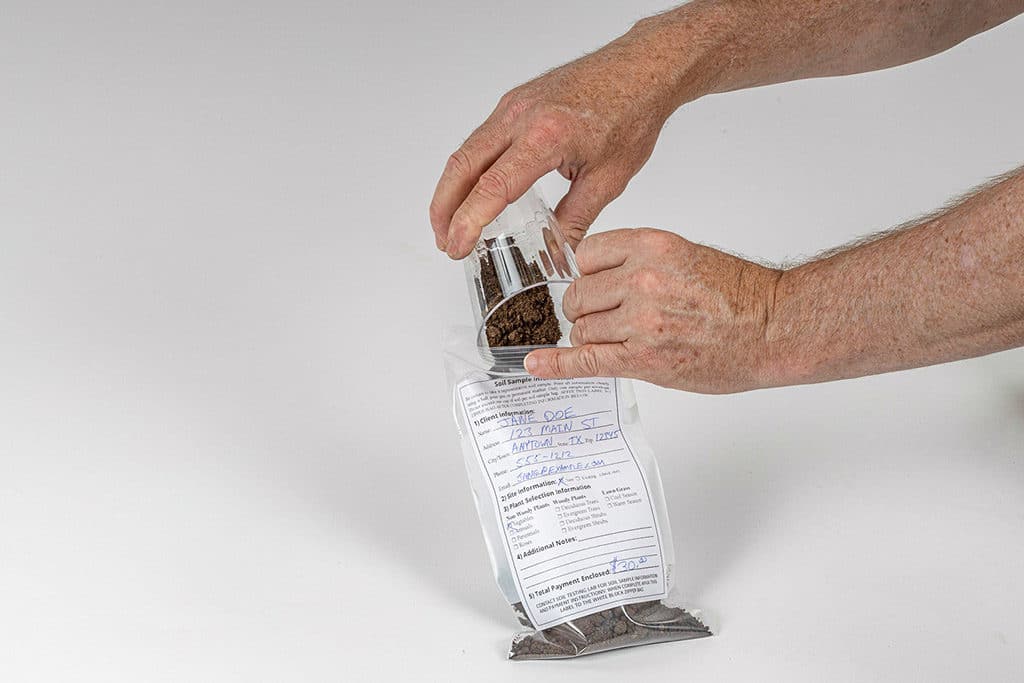
Carefully pour one cup of your thoroughly-mixed sample into the zipper bag, place the bag in the mailing envelope, enclose payment, and mail it. The soil testing lab will send back a report showing your soil nutrient levels along with any necessary fertilizer application rates.

